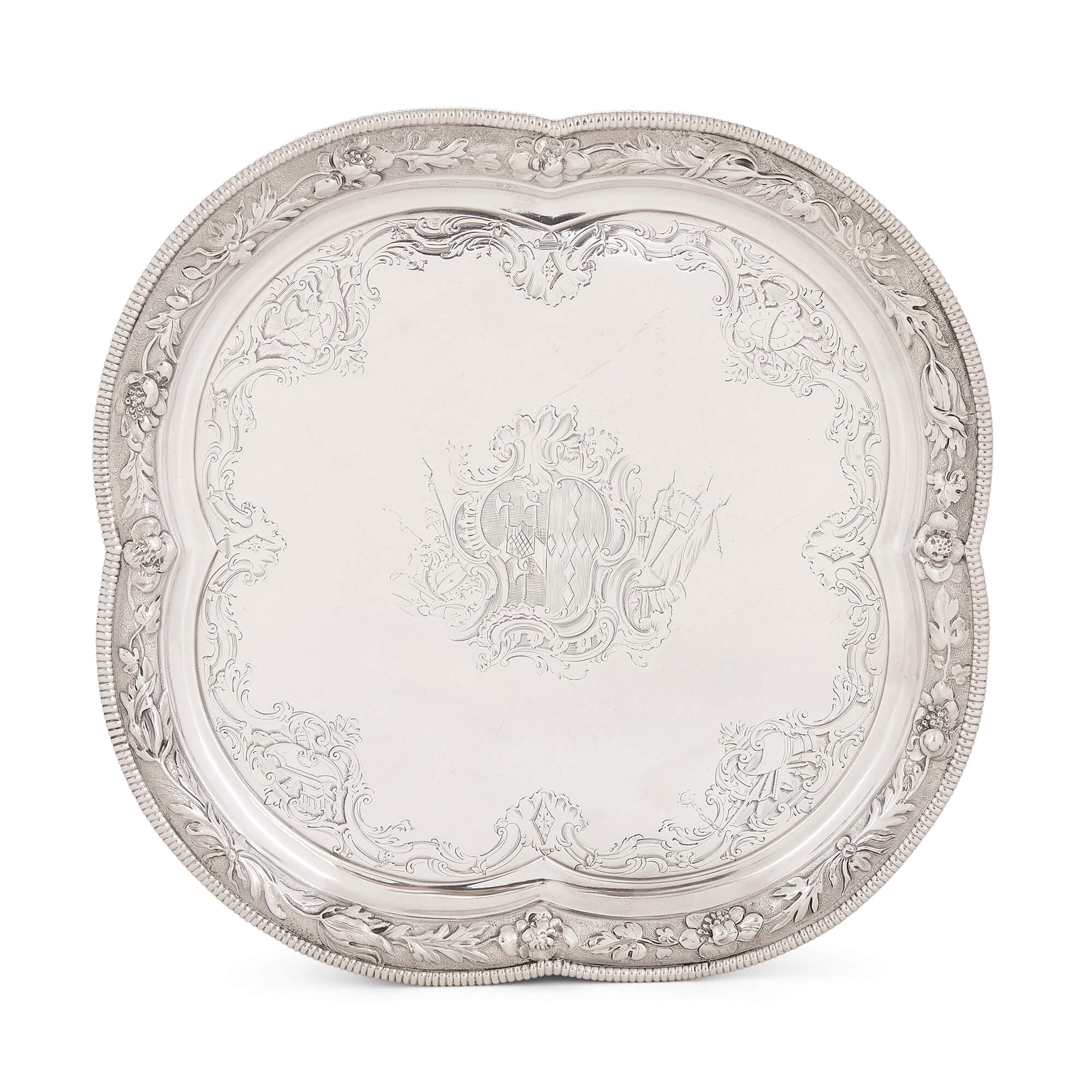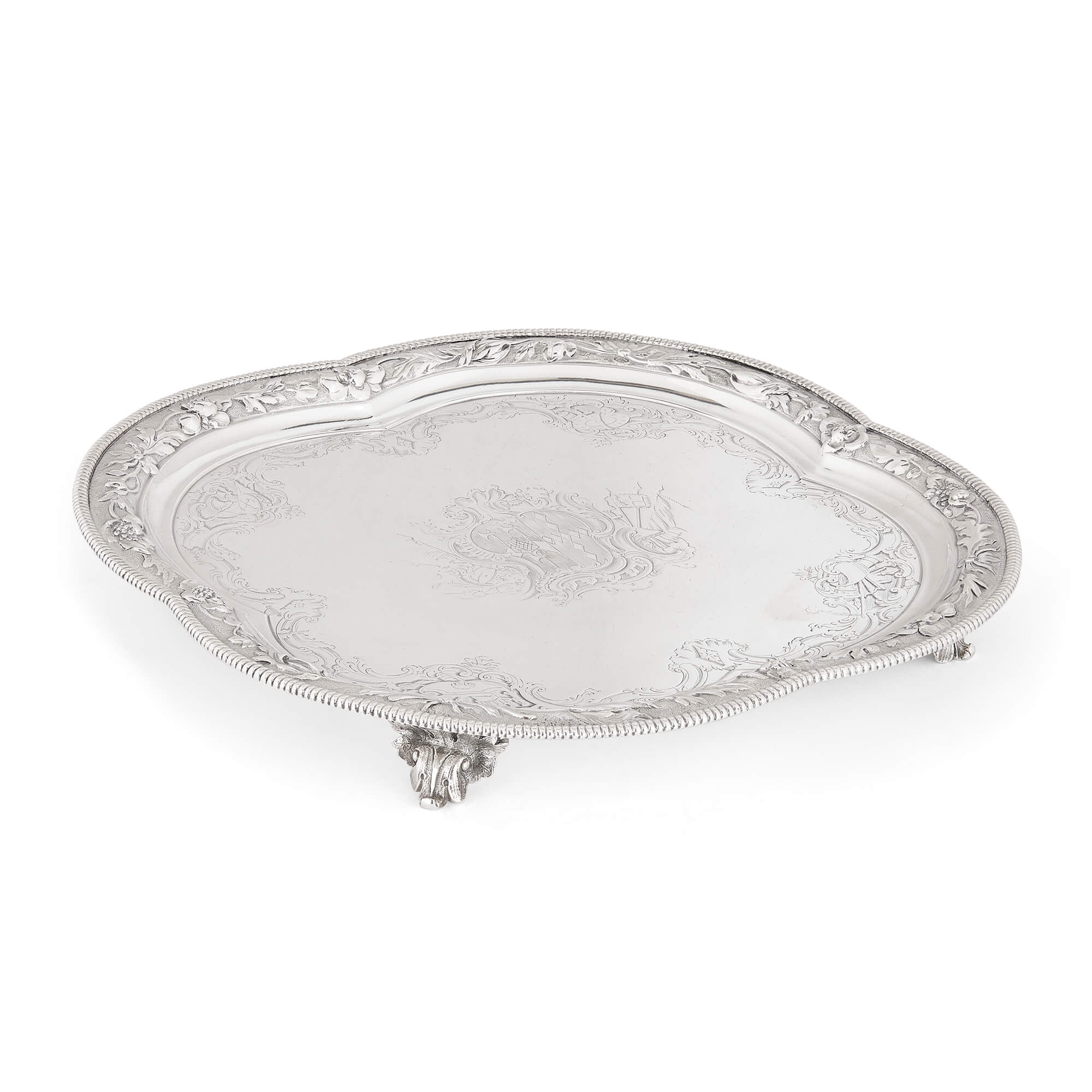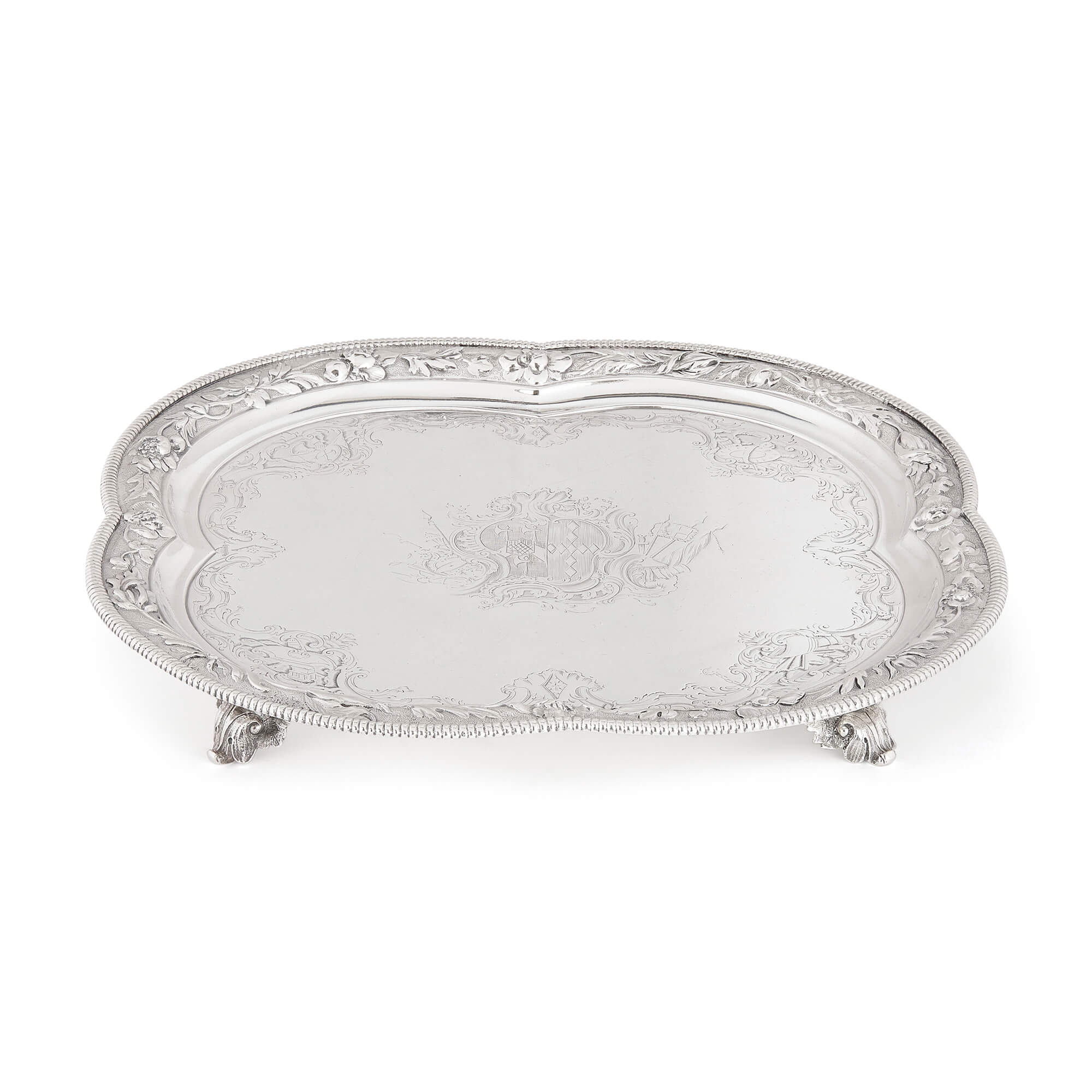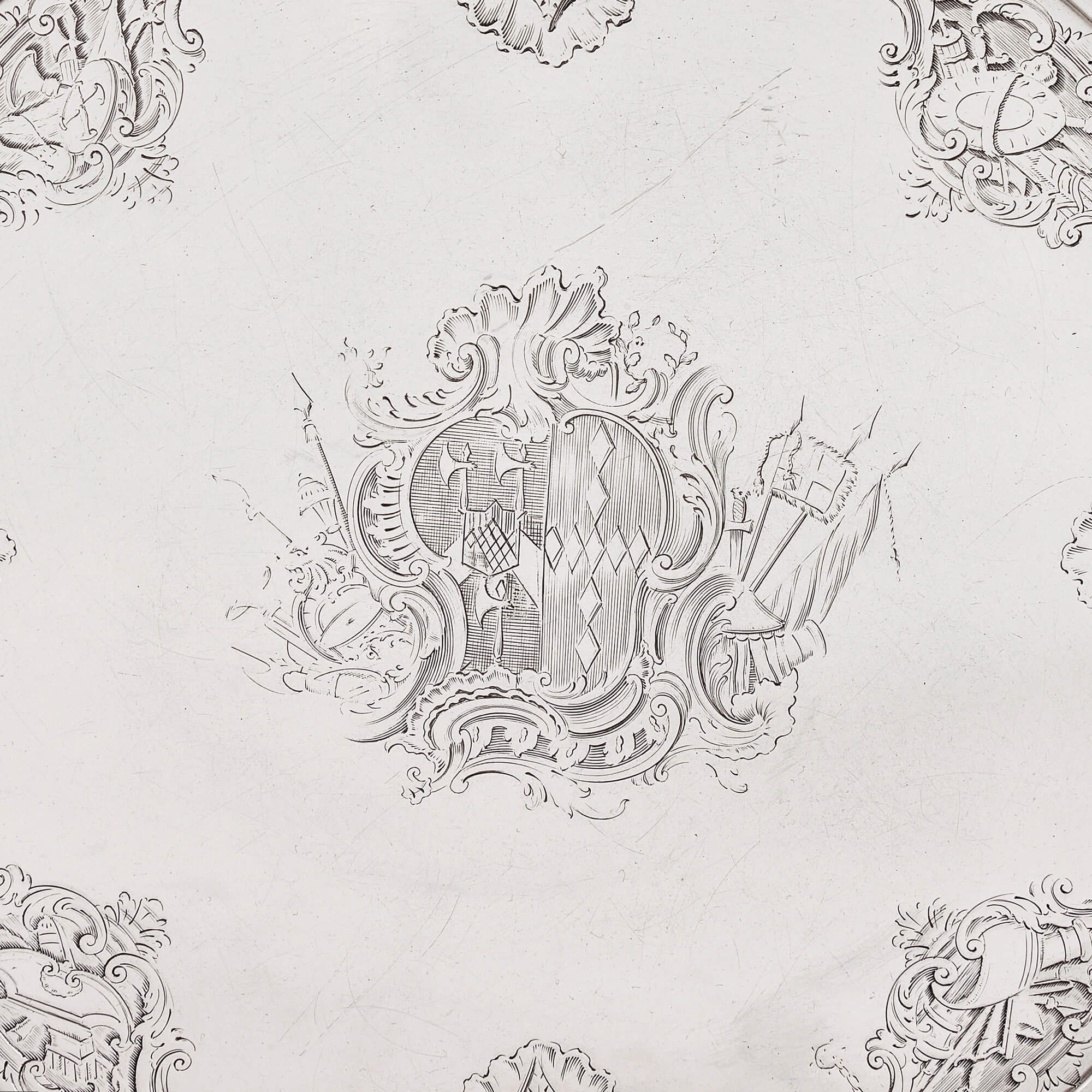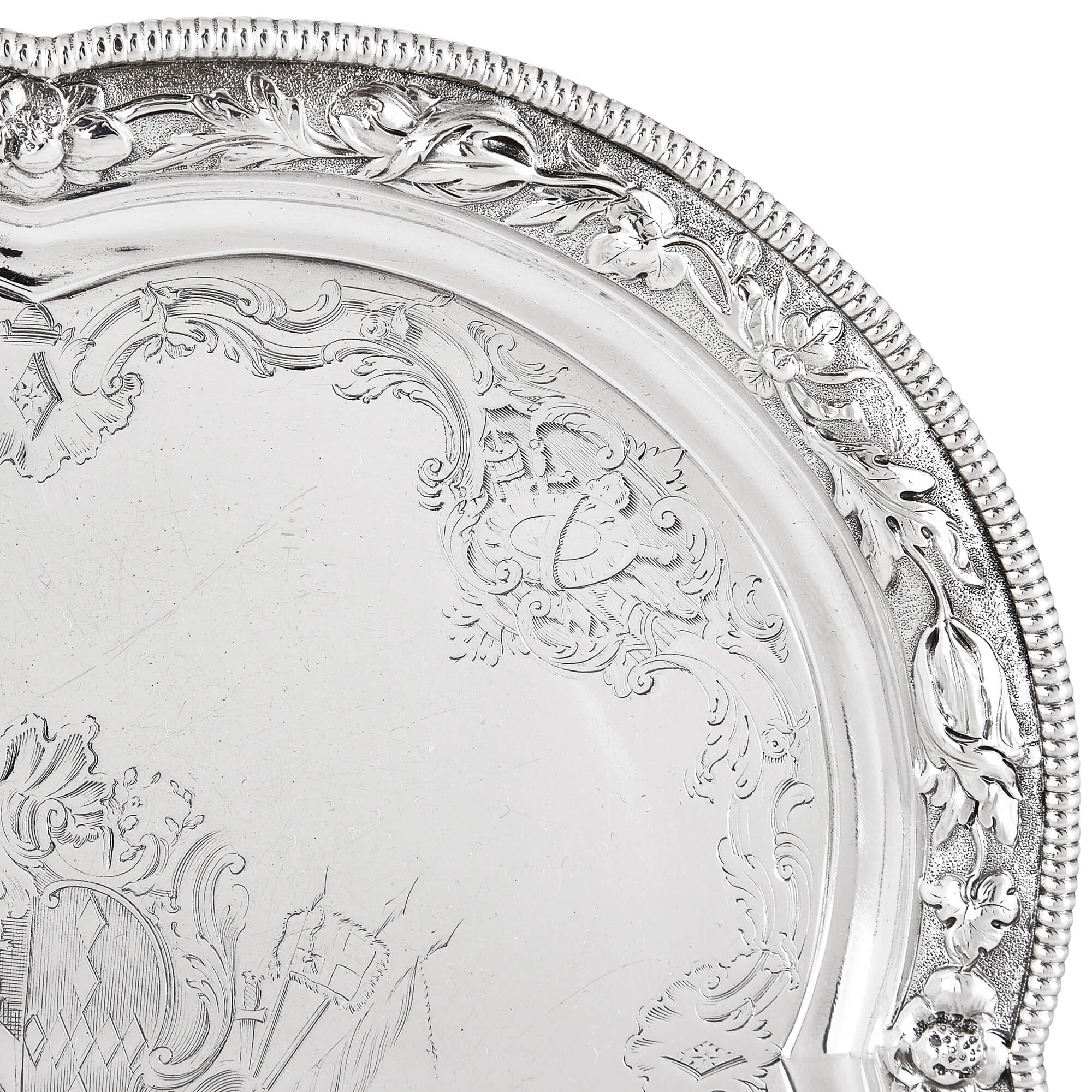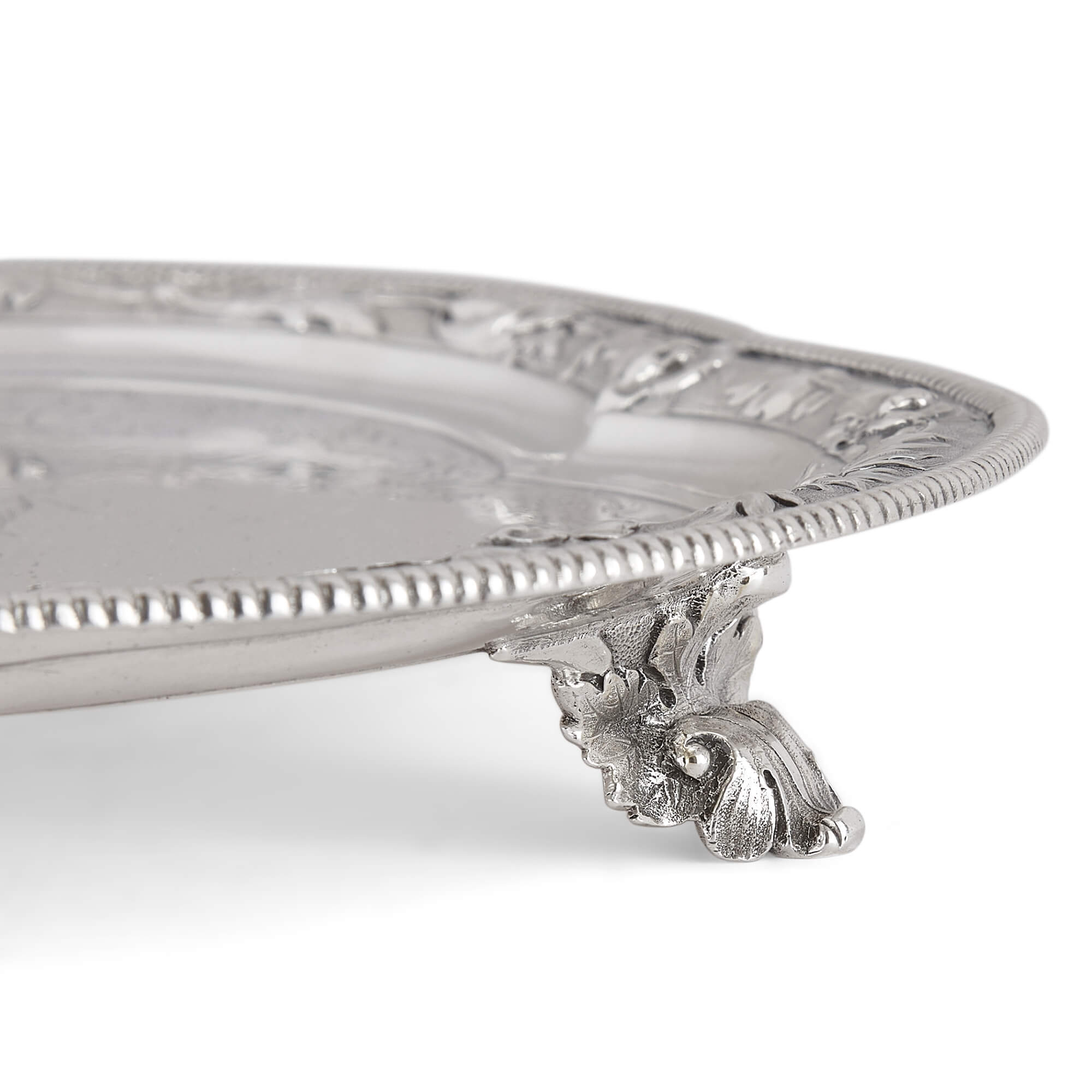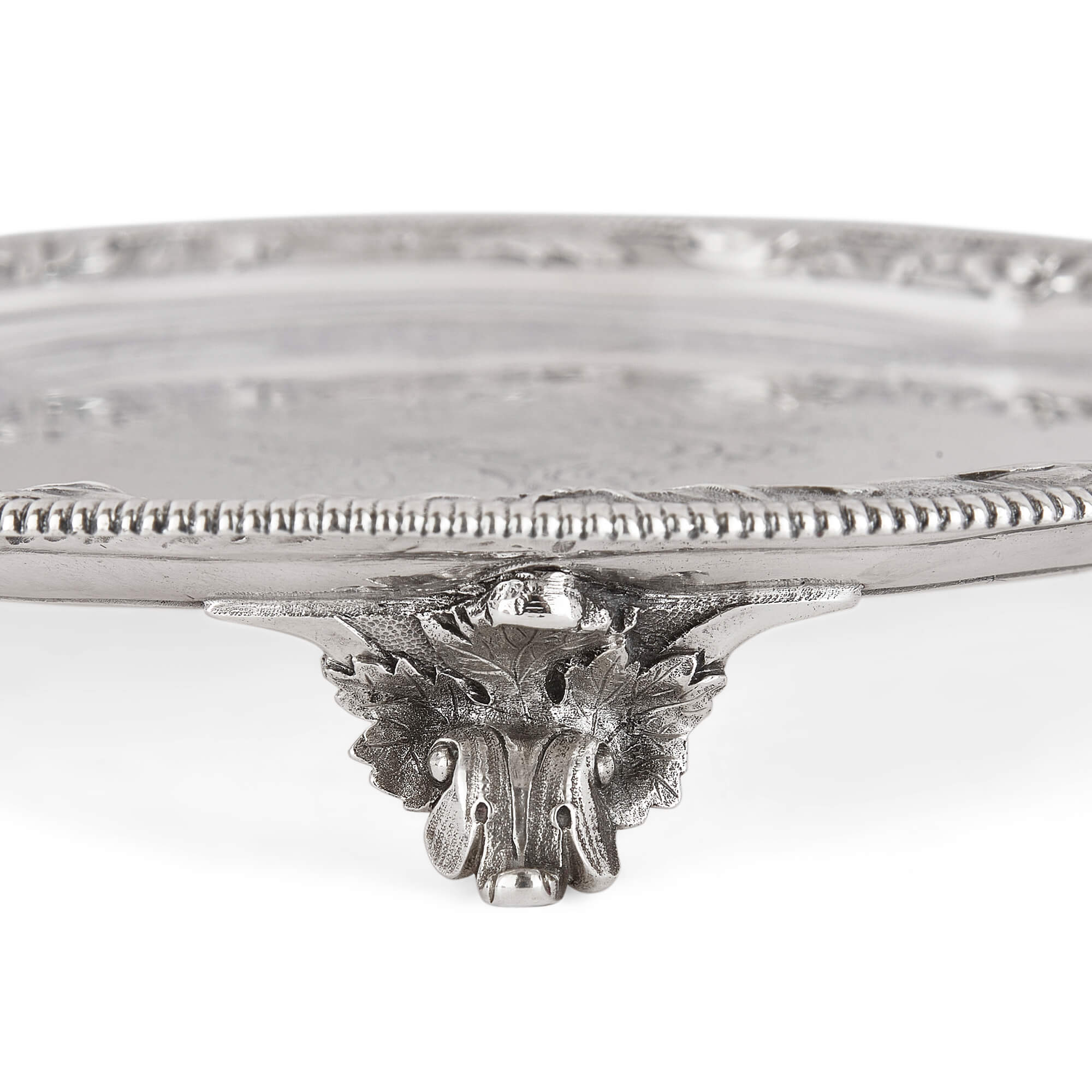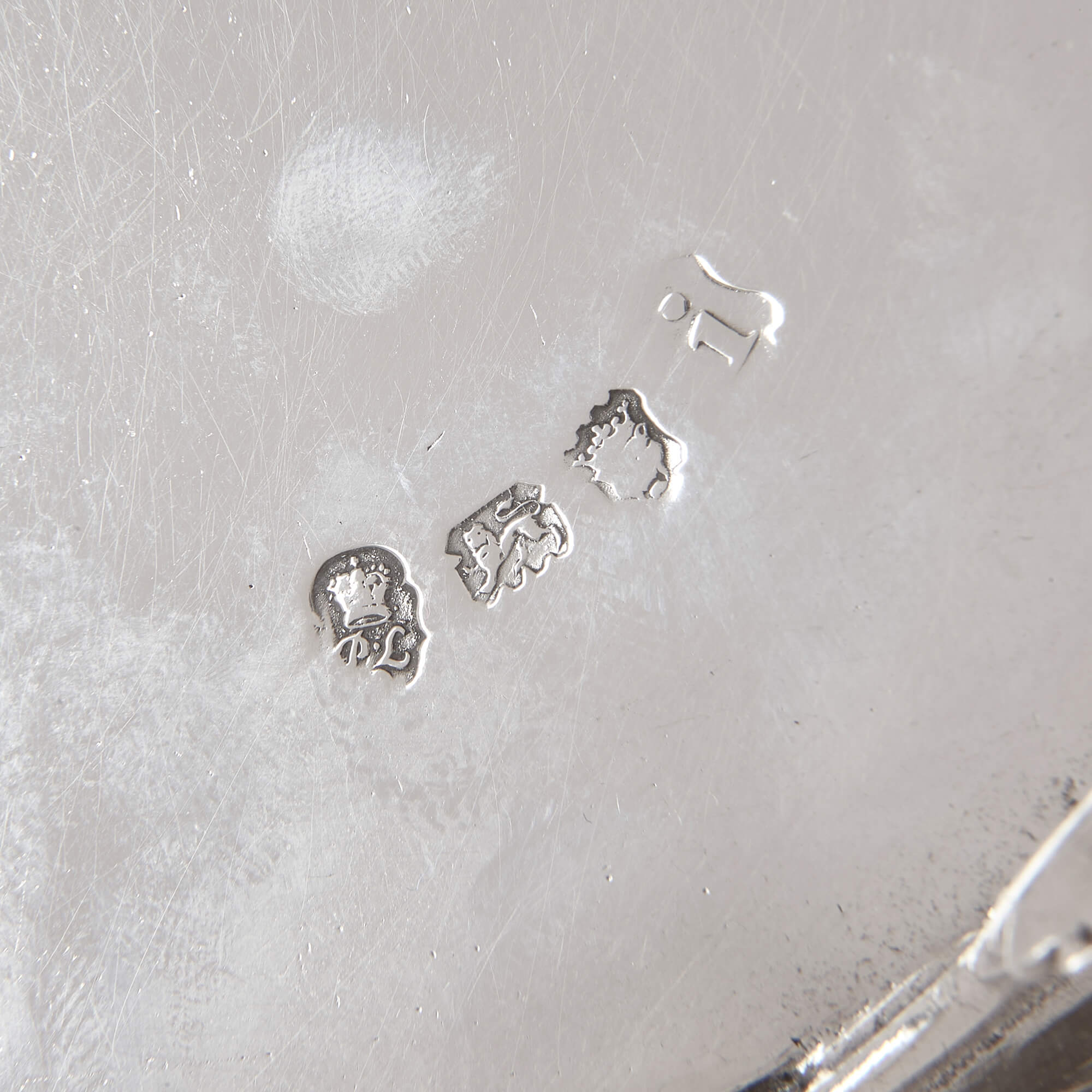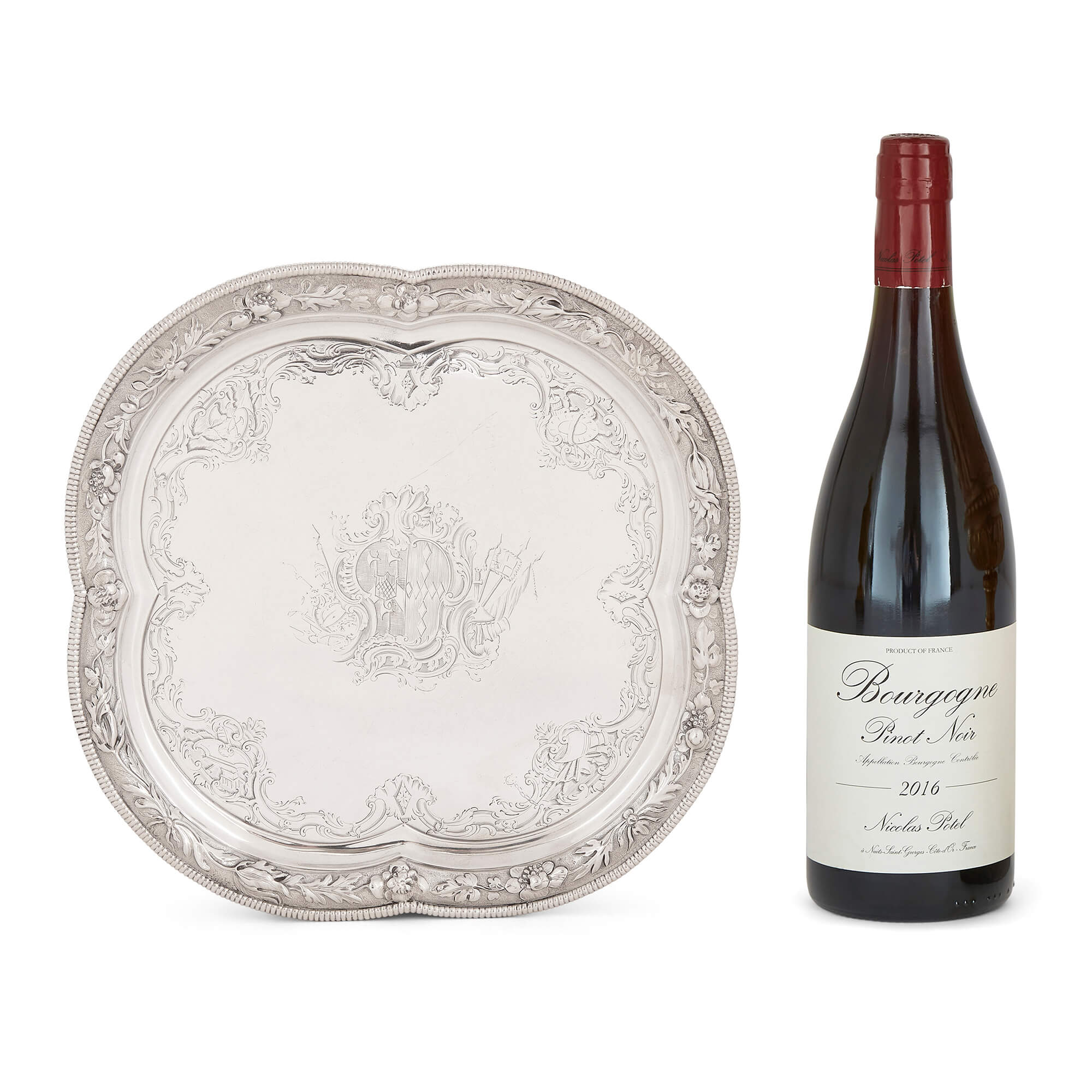Superbly formed and engraved, this English silver salver was made in the 18th century by Paul de Lamerie (English, 1688-1751) who was a leading Dutch-born English silversmith.
The centre of the piece is intricately inscribed with a family coat of arms, featuring a rocaille form frame. The coat of arms is the marital arms of Ralph Congreve (1721-1775) and his wife, Charlotte (d. 24 Jul 1762), daughter and heir of William, 3rd Baron Stawell of Somerton in Somerset. As Ralph and Charlotte married on 29 June 1752, this salver must have been engraved some years after it was made, possibly on their marriage. Ralph was a cousin of Lt Gen Sir William Congreve, who developed the Congreve Rocket used in the Napoleonic Wars.
The crest is surrounded by further rocaille form engravings, with additional symbols and motifs similar to those on the crest. The edge is beautifully stamped with flowers and foliage, its three-dimensional form adding an interesting aesthetic. A ropework border is crafted around the outer edge. The salver stands on four identical outward-curling feet formed to look like acanthus leaves, a popular motif during the Rococo period.
On the reverse, the piece is fully hallmarked and stamped with a maker’s mark.
In 1712, Paul de Lamerie opened his shop, quickly becoming renowned for his innovative work and high technical knowledge. In the early years of his practice, he created objects with a paired down design, while in the later years, de Lamerie favoured ornate features of the Rococo style. His patrons included members of the British aristocracy, for example, Robert Walpole, first Earl of Orford. In 1751, the London Evening Standard published an obituary notice for de Lamiere proclaiming him to ‘be very instrumental in bringing that Branch of Trade to the perfection it is now in’. Pieces created by de Lamerie are in the collection of some of the world’s best museums such as the Victoria and Albert Museum in London.
Provenance-+
Lord Swaythling (1902)
Anon sale, Christie's, 6 May 1924, lot 9
Anon sale, Christie's, 23 June 1976, lot 70
Anon sale, Christie's, Geneva, 13 May 1986, lot 125
Exhibited at:
Loan Exhibition, St James's Court, 1902, no. C39
Literature-+
P.A.S.Phillips, Paul de Lamerie, His Life and Work (1935), plate CXLI. The author writes of the salver 'this is a very unusual specimen of de Lamerie's work, the quatrefoil shaped outline being excessively rare'.




